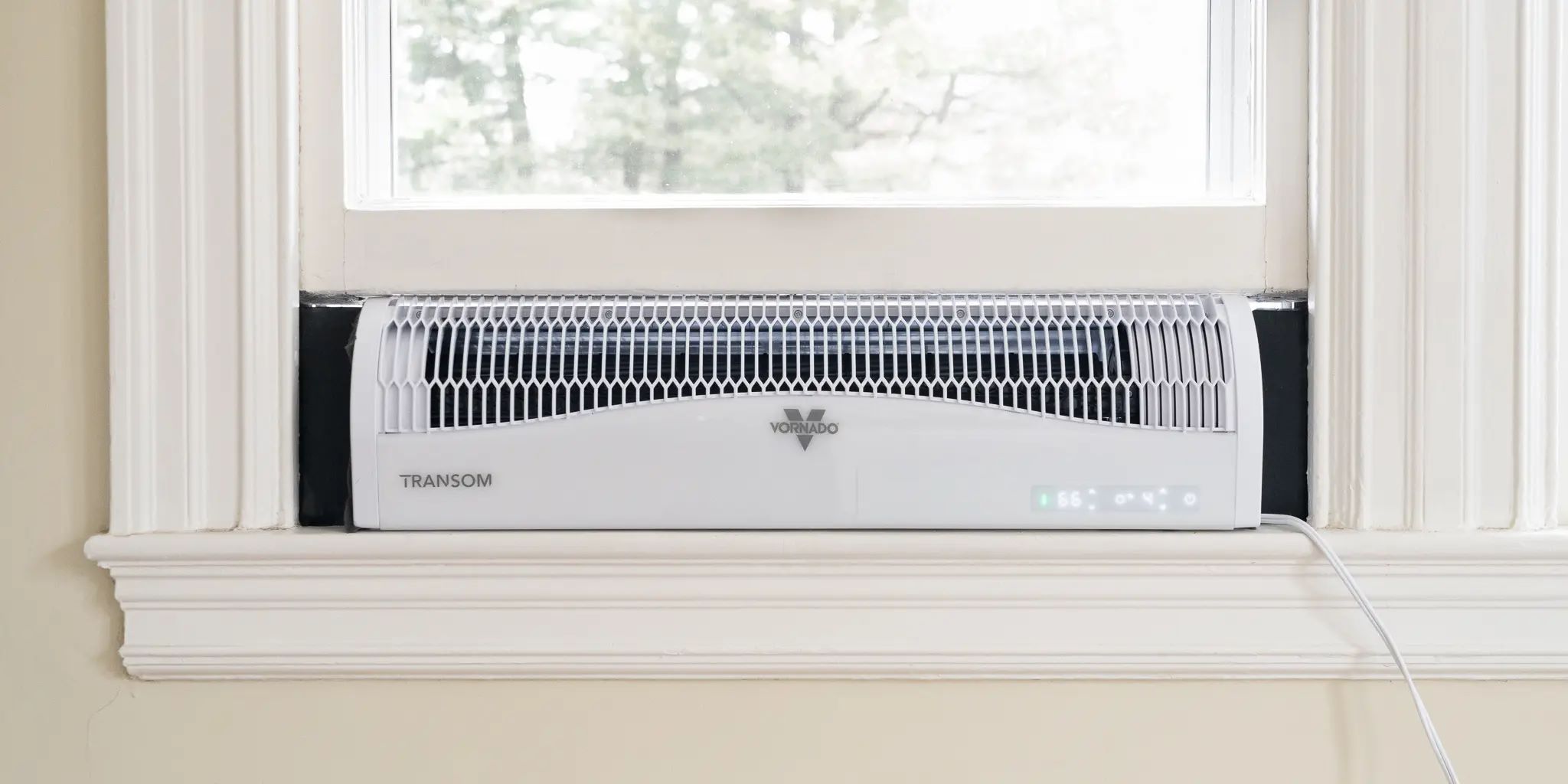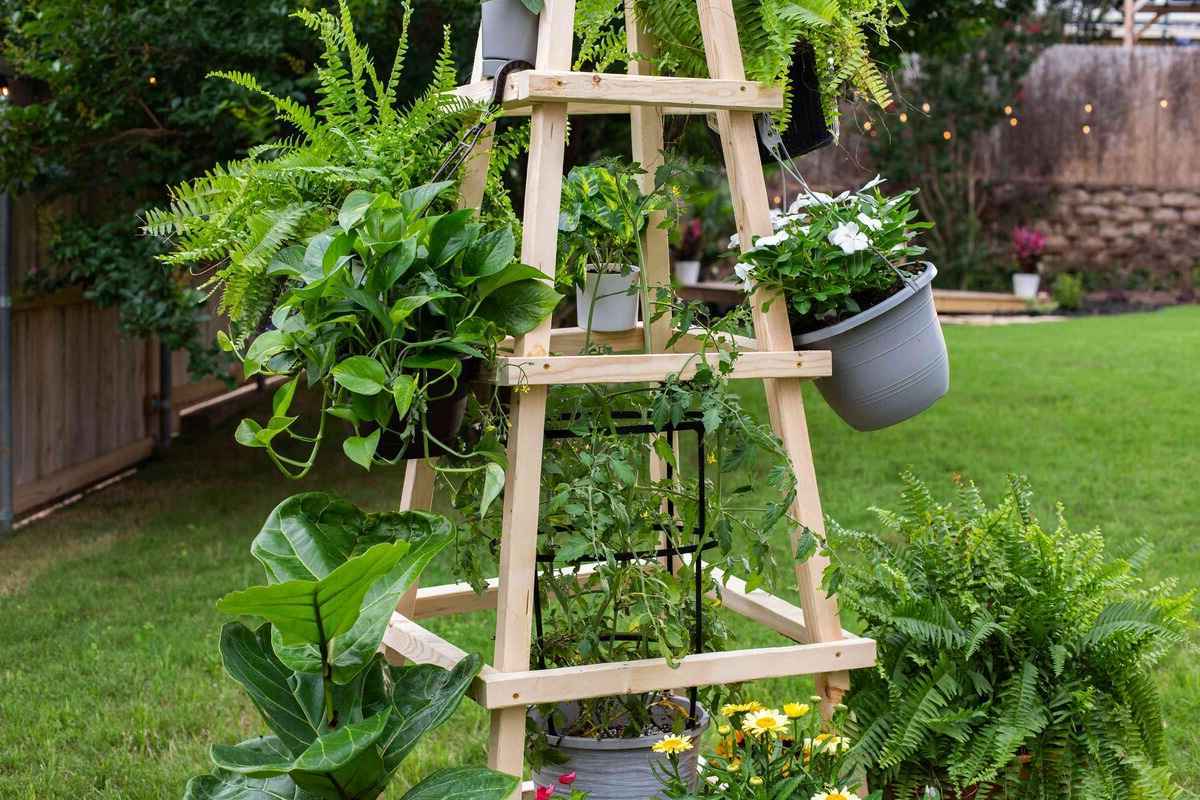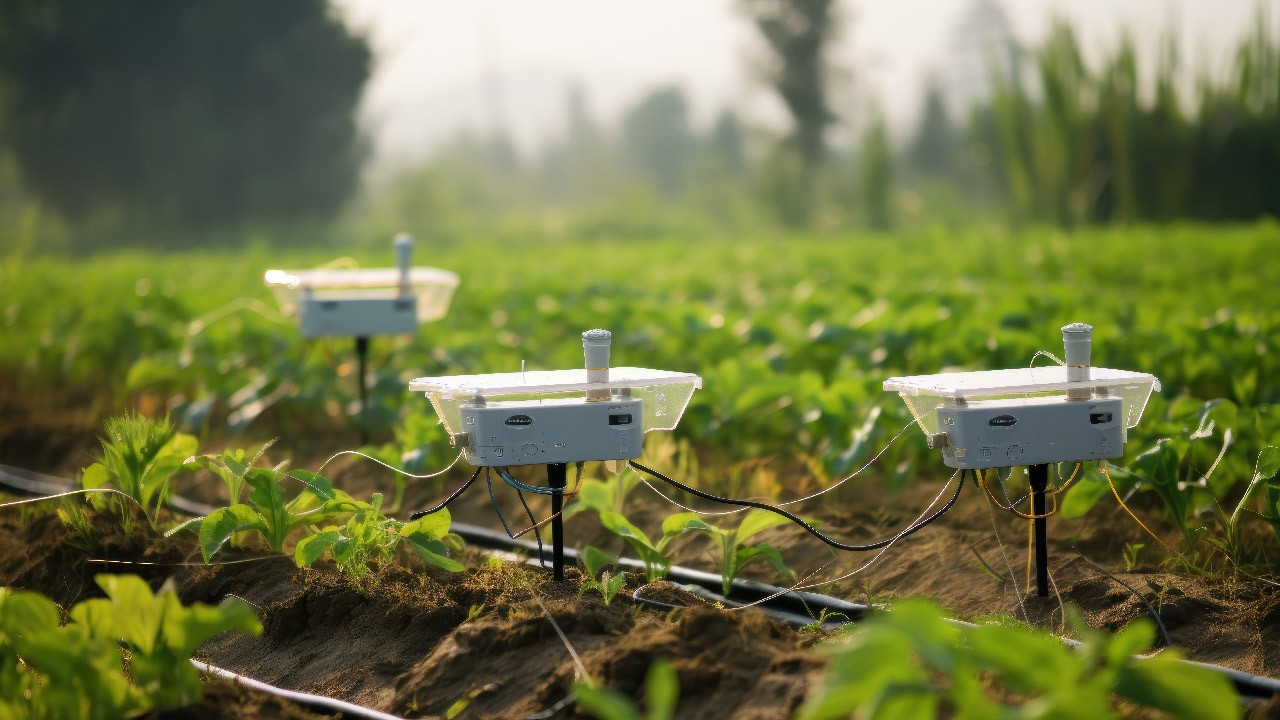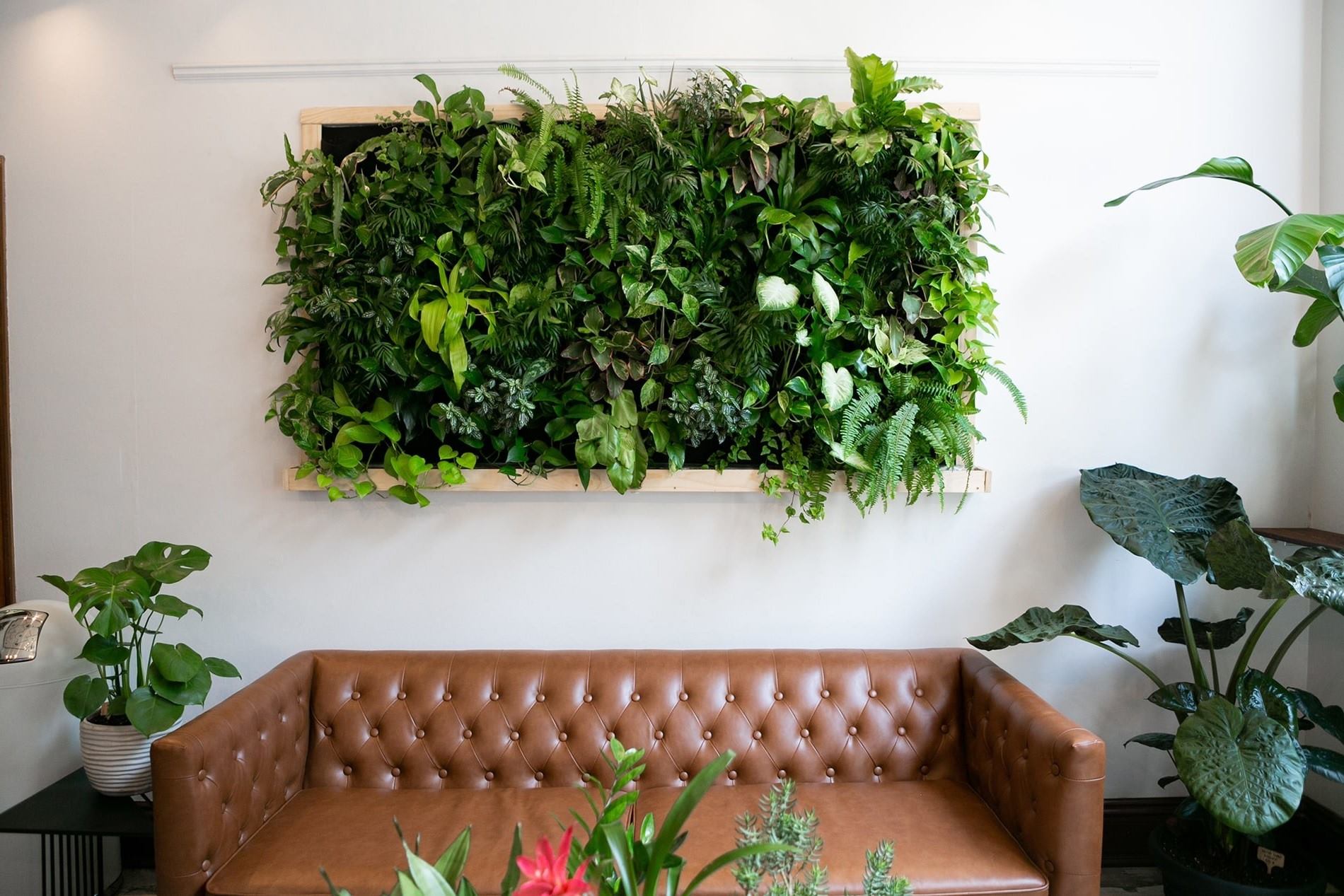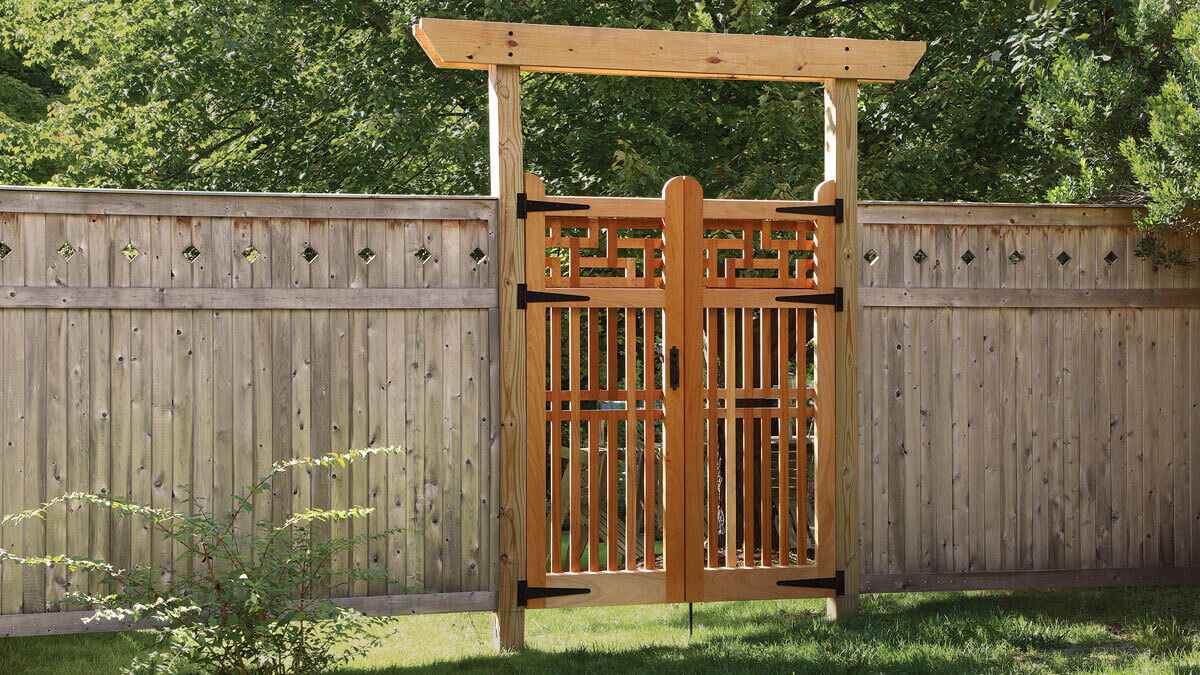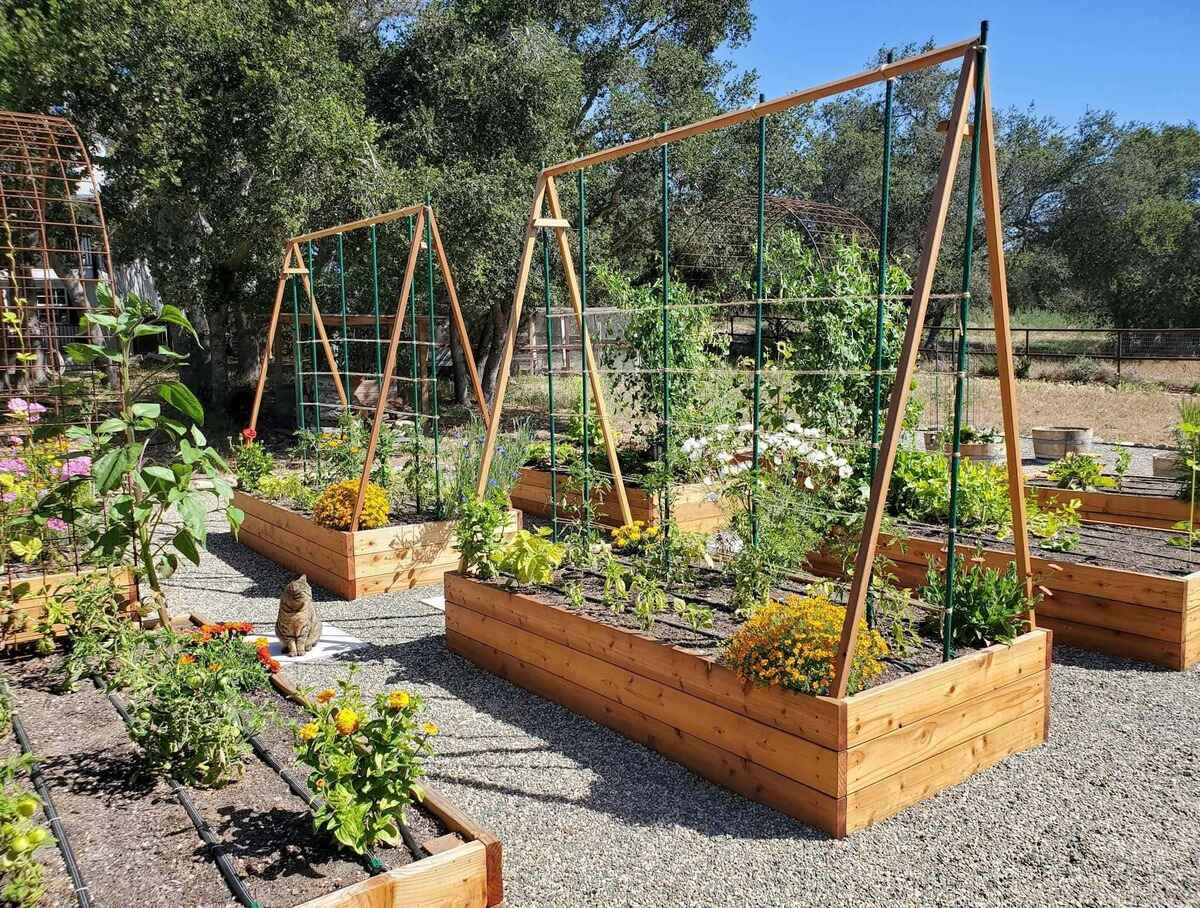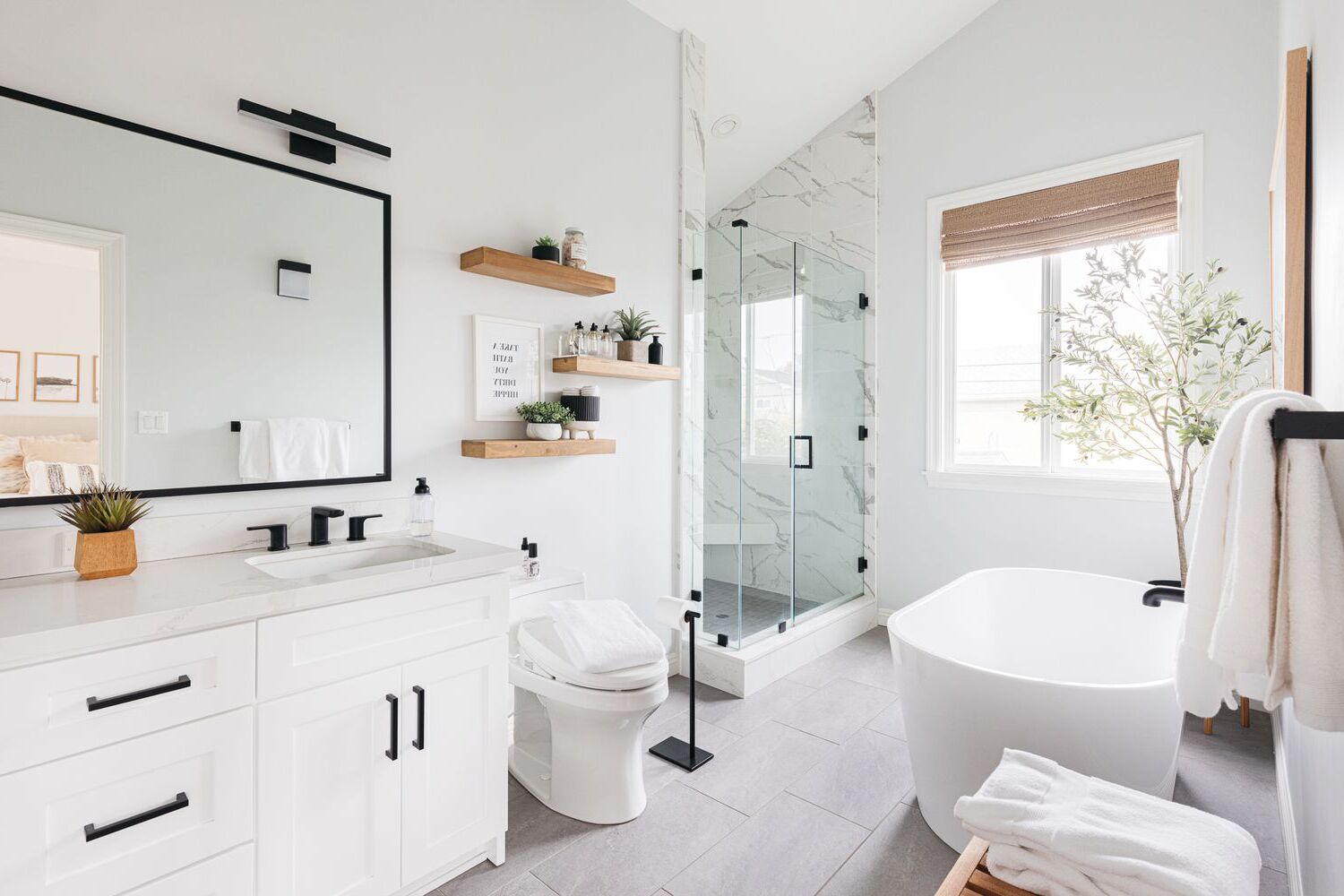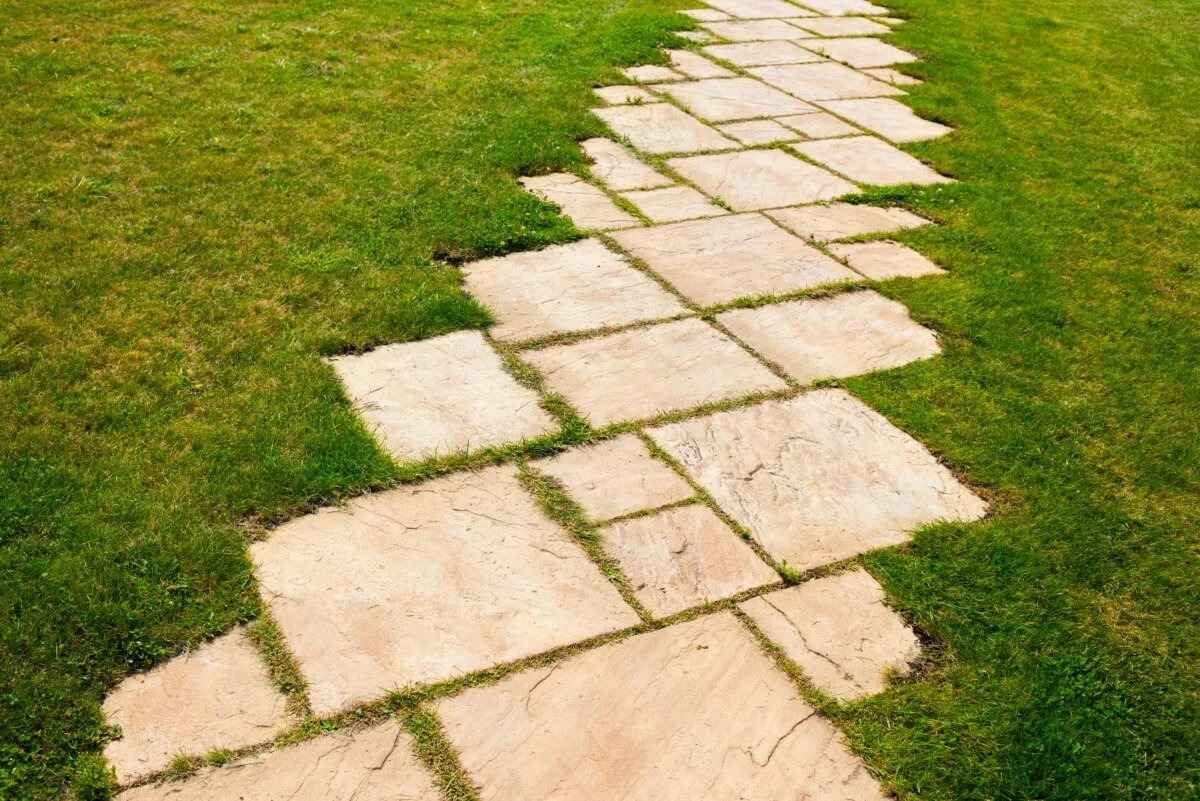Home>Create & Decorate>DIY & Crafts>Vertical Garden: A DIY Guide To Creating Your Own Green Oasis
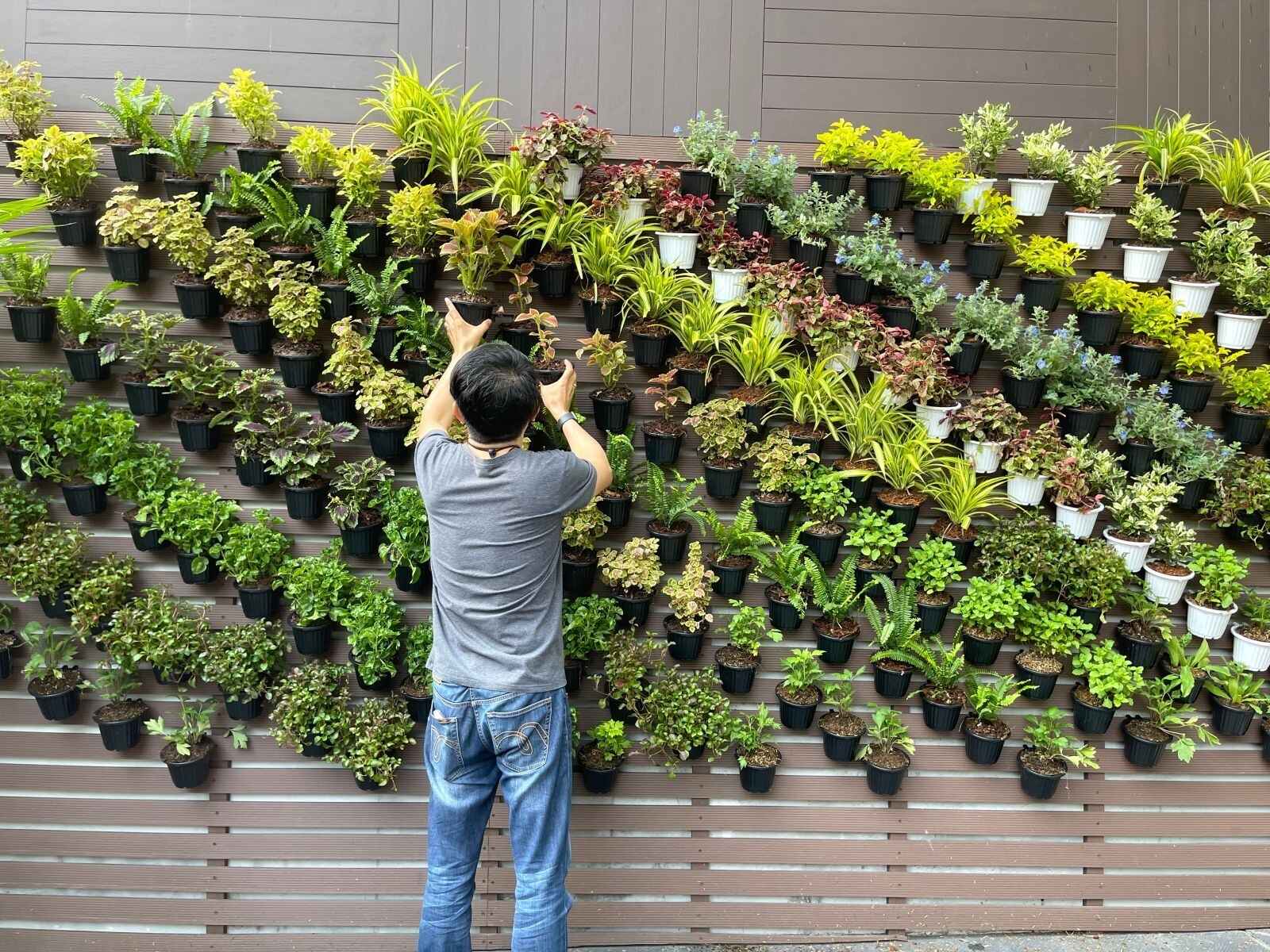

DIY & Crafts
Vertical Garden: A DIY Guide To Creating Your Own Green Oasis
Published: May 6, 2024

Content Creator specializing in woodworking and interior transformations. Caegan's guides motivate readers to undertake their own projects, while his custom furniture adds a personal touch.
Create your own green oasis with our DIY guide to vertical gardening. Transform your space with these creative and sustainable craft ideas. Discover how to bring nature indoors!
(Many of the links in this article redirect to a specific reviewed product. Your purchase of these products through affiliate links helps to generate commission for Twigandthistle.com, at no extra cost. Learn more)
Introduction
Are you looking to add a touch of green to your living space but don't have much room for a traditional garden? A vertical garden might just be the perfect solution for you. Whether you're a seasoned gardener or a complete novice, creating your own green oasis with a vertical garden can be a rewarding and enjoyable DIY project. In this guide, we'll walk you through the step-by-step process of building and maintaining your very own vertical garden, so you can bring the beauty of nature into your home in a unique and space-saving way.
Read more: How To Build A Putting Green In Backyard
Benefits of Vertical Gardens
Vertical gardens offer a multitude of benefits, making them an attractive option for both indoor and outdoor spaces. Here are some of the key advantages of incorporating a vertical garden into your home:
-
Space-Saving: Vertical gardens are perfect for those with limited space. They allow you to make the most of vertical real estate, making them ideal for small balconies, patios, or even indoor walls.
-
Aesthetic Appeal: These gardens add a stunning visual element to any space. They can serve as living art installations, bringing a pop of color and texture to an otherwise plain wall or surface.
-
Improved Air Quality: Plants are natural air purifiers, and having a vertical garden can help improve the air quality in your home. They absorb carbon dioxide and release oxygen, creating a healthier indoor environment.
-
Noise Reduction: The lush foliage of a vertical garden can act as a natural sound barrier, helping to reduce noise pollution in urban environments.
-
Therapeutic Benefits: Gardening has been shown to have therapeutic effects, reducing stress and promoting a sense of well-being. Tending to a vertical garden can be a calming and rewarding experience.
-
Temperature Regulation: In outdoor spaces, vertical gardens can help regulate temperature by providing insulation and shade, keeping the area cooler in hot weather.
-
Increased Biodiversity: Vertical gardens can attract a variety of beneficial insects and birds, contributing to the overall biodiversity of your surroundings.
By considering these benefits, you can see how a vertical garden can be a valuable addition to your living space, offering both practical and aesthetic advantages.
Choosing the Right Location for Your Vertical Garden
When it comes to setting up your vertical garden, selecting the right location is crucial for the success of your green oasis. Here are some key factors to consider when choosing the perfect spot for your vertical garden:
-
Sunlight Exposure: Assess the amount of sunlight the location receives throughout the day. Most plants thrive in direct sunlight, so if you're planning to grow sun-loving species, choose a spot that gets at least 6-8 hours of sunlight daily. If your space is shaded, opt for shade-tolerant plants such as ferns, mosses, or certain types of ivy.
-
Accessibility: Consider the accessibility of the chosen location. You'll want to ensure that you can easily reach the plants for watering, pruning, and maintenance. If the vertical garden is indoors, make sure it's within reach of a water source.
-
Structural Integrity: Check the structural integrity of the surface where you plan to install the vertical garden. Whether it's a wall, fence, or balcony, ensure that it can support the weight of the garden, especially when it's fully saturated after watering.
-
Aesthetics: Think about the visual impact of the vertical garden in its chosen location. Consider how it will complement the surrounding space and whether it will obstruct any views or pathways.
-
Water Source: Proximity to a water source is essential for easy maintenance. If the location is far from a water outlet, consider how you will water the plants effectively, whether through a hose, watering can, or irrigation system.
-
Environmental Conditions: Take into account the environmental conditions of the location, including wind exposure and temperature fluctuations. Windy areas may require sturdier plant selections and secure anchoring of the vertical garden structure.
By carefully considering these factors, you can choose the optimal location for your vertical garden, setting the stage for healthy plant growth and a visually appealing addition to your living space.
Selecting the Best Plants for Your Vertical Garden
Choosing the right plants is essential for the success of your vertical garden. Not all plants are well-suited for vertical growth, so it's important to select species that thrive in a vertical environment. Here are some factors to consider when selecting plants for your vertical garden:
Light Requirements
Different plants have varying light requirements. Some thrive in full sun, while others prefer shade. Assess the amount of sunlight your vertical garden will receive and choose plants that are well-suited to those light conditions. For sunny locations, consider sun-loving plants such as succulents, herbs, and flowering annuals. In shaded areas, opt for shade-tolerant plants like ferns, mosses, and certain types of ivy.
Read more: How To Build A Golf Green
Growth Habit
When selecting plants for a vertical garden, consider their growth habit. Look for trailing, cascading, or upright plants that will adapt well to vertical growth. Trailing plants like petunias, ivy, and sweet potato vine are excellent choices for vertical gardens, as they naturally drape and create a lush, cascading effect. Upright plants such as ornamental grasses and vertical-growing herbs like rosemary and thyme can add height and structure to the garden.
Watering Needs
Plants in a vertical garden may have different watering needs compared to traditional gardens. Consider the water retention capabilities of the chosen plants and select species that can thrive in a vertical, well-drained environment. Drought-tolerant plants like sedum, yucca, and lavender are excellent choices for vertical gardens, requiring minimal watering and maintenance.
Maintenance Requirements
Choose plants that are low-maintenance and well-suited for vertical growing conditions. Look for species that are not prone to pests and diseases, as well as those that require minimal pruning and grooming. Low-maintenance plants such as spider plants, pothos, and air plants are well-suited for vertical gardens, requiring little attention to thrive.
Consider Plant Combinations
Create visual interest and diversity in your vertical garden by selecting a variety of plant species with different colors, textures, and growth habits. Mix and match plants with contrasting foliage, flower colors, and heights to create a visually appealing and dynamic vertical garden.
By considering these factors and selecting the right plants for your vertical garden, you can create a thriving and visually stunning green oasis that enhances your living space.
Read more: How to Build a DIY Vertical Sliding Door
Building the Frame for Your Vertical Garden
The frame of your vertical garden serves as the foundation for the entire structure, providing support for the plants and the irrigation system. When building the frame, it's essential to consider the materials, design, and structural integrity to ensure the stability and longevity of your vertical garden.
Materials
Choose durable and weather-resistant materials for the frame of your vertical garden. Common options include cedar, redwood, or pressure-treated lumber for outdoor gardens, as these materials are resistant to rot and decay. For indoor vertical gardens, consider lightweight materials such as PVC, metal, or recycled plastic. Ensure that the materials are safe for use with plants and will not leach harmful chemicals into the soil.
Design
The design of the frame will depend on the size and location of your vertical garden. Consider the available space and the number of plants you intend to grow. A simple, rectangular frame works well for smaller gardens, while larger installations may require a more complex design with multiple tiers or sections. Incorporating shelves or pockets within the frame can provide additional planting space and visual interest.
Structural Integrity
Stability is crucial when building the frame for your vertical garden, especially if it will be supporting a significant amount of soil and plants. Ensure that the frame is securely anchored to the wall or structure, using appropriate hardware and fasteners. For freestanding vertical gardens, the frame should have a sturdy base to prevent tipping or leaning. Consider consulting a professional or using a pre-designed vertical garden kit to ensure structural integrity and safety.
Read more: How to Build a DIY Kitchen Garden Window
Customization
Customize the frame to suit your aesthetic preferences and functional needs. You can paint or stain the frame to complement your existing decor or create a striking visual contrast. Incorporate features such as built-in trellises, hooks for hanging plants, or integrated lighting for added functionality and visual appeal.
Sustainability
Consider sustainable practices when building the frame for your vertical garden. Use reclaimed or recycled materials whenever possible, and opt for eco-friendly finishes and sealants. Additionally, incorporate features that promote sustainability, such as a rainwater collection system or composting capabilities within the vertical garden structure.
By carefully considering the materials, design, structural integrity, customization, and sustainability of the frame, you can create a sturdy and visually appealing foundation for your vertical garden, setting the stage for a thriving green oasis in your home or outdoor space.
Installing the Irrigation System
Installing an efficient irrigation system is crucial for the success of your vertical garden, ensuring that your plants receive the proper amount of water to thrive. Here's a detailed guide on how to install an effective irrigation system for your green oasis:
Drip Irrigation
Drip irrigation is the most common and effective method for watering vertical gardens. It delivers water directly to the base of each plant, minimizing water waste and ensuring efficient hydration. To install a drip irrigation system, you will need tubing, emitters, connectors, and a water source.
Read more: How to Build a Window Well Garden
Steps for Installation
-
Plan the Layout: Determine the layout of the tubing, ensuring that each plant will receive adequate water. Lay out the tubing along the frame of the vertical garden, positioning it to reach each planting pocket or container.
-
Connect the Tubing: Use connectors to join the sections of tubing, creating a continuous loop that runs throughout the entire vertical garden. Ensure a secure and watertight connection at each junction.
-
Install Emitters: Place emitters at the base of each plant, ensuring that they are positioned to deliver water directly to the root zone. Emitters come in various flow rates, so select ones that provide the appropriate amount of water for each plant.
-
Connect to Water Source: Connect the tubing to a water source, such as a garden hose or outdoor faucet. Consider installing a timer or automated irrigation system to regulate the watering schedule and ensure consistent moisture levels for your plants.
-
Test the System: Once the irrigation system is installed, test it to ensure that water is reaching each plant effectively. Check for any leaks, clogs, or uneven water distribution, and make adjustments as needed.
Additional Considerations
-
Watering Schedule: Establish a regular watering schedule based on the specific needs of the plants in your vertical garden. Consider factors such as sunlight exposure, plant type, and environmental conditions when determining the frequency and duration of watering.
-
Water Conservation: Incorporate water-saving practices into your irrigation system, such as using a rainwater collection system or incorporating moisture-retaining additives into the soil to reduce water consumption.
-
Maintenance: Regularly inspect and maintain the irrigation system to ensure optimal performance. Clean the emitters, check for clogs, and replace any damaged or worn components as needed.
By following these steps and considerations, you can install an efficient and reliable irrigation system for your vertical garden, providing your plants with the essential moisture they need to thrive and flourish in their vertical environment.
Planting and Maintaining Your Vertical Garden
Planting and maintaining your vertical garden is a crucial step in ensuring the long-term health and vibrancy of your green oasis. Here's a detailed guide on how to plant and care for your vertical garden to create a flourishing and visually stunning display of plant life.
Soil Selection
Selecting the right soil is essential for the success of your vertical garden. Choose a lightweight, well-draining potting mix that is specifically formulated for container or vertical gardening. Avoid using standard garden soil, as it can be too dense and may not provide adequate aeration for the plants' roots. Additionally, consider adding a slow-release fertilizer to the soil to provide essential nutrients for plant growth.
Read more: How to Build an Indoor Window Planter Box
Planting Process
When planting your vertical garden, follow these steps to ensure proper establishment and growth of the plants:
- Preparation: Fill each planting pocket or container with the selected potting mix, leaving enough space for the root ball of the plant.
- Plant Selection: Carefully select the plants based on their light requirements, growth habits, and maintenance needs. Arrange the plants in a visually appealing and balanced layout, considering factors such as color, texture, and height.
- Planting: Gently remove the plants from their nursery containers and place them into the prepared pockets or containers. Ensure that the root ball is positioned securely and that the soil is packed around the roots to provide stability.
Maintenance Tips
Maintaining your vertical garden is essential for the ongoing health and vitality of the plants. Here are some maintenance tips to keep your green oasis thriving:
- Watering: Monitor the moisture levels in the soil regularly and water the plants as needed. Vertical gardens may require more frequent watering, especially during hot and dry periods. Ensure that the entire garden receives adequate moisture, paying attention to plants at the top and bottom of the structure.
- Pruning and Trimming: Regularly trim and prune the plants to maintain their shape and prevent overgrowth. Remove any dead or yellowing foliage to promote healthy growth and prevent disease.
- Fertilization: Apply a balanced, water-soluble fertilizer to the plants according to the manufacturer's instructions. Fertilize the plants during the growing season to provide essential nutrients for robust growth and flowering.
- Pest and Disease Management: Keep an eye out for pests and signs of disease, and take prompt action to address any issues. Inspect the plants regularly for common pests such as aphids, spider mites, and whiteflies, and treat as necessary using organic or targeted pest control methods.
Seasonal Care
Adjust your maintenance routine based on the changing seasons to ensure that your vertical garden remains healthy and vibrant throughout the year:
- Winter Care: In colder climates, protect the plants from frost and freezing temperatures by providing insulation or moving the garden to a sheltered location. Reduce watering during the dormant season and avoid overwatering to prevent root rot.
- Spring Preparation: As the weather warms up, assess the condition of the plants and prune any winter damage. Refresh the soil with a top dressing of compost and replenish any nutrients that may have been depleted during the winter months.
By following these planting and maintenance guidelines, you can create and sustain a thriving vertical garden that brings beauty and vitality to your living space, providing a stunning display of nature in a unique and space-saving manner.
Troubleshooting Common Issues
Even with careful planning and maintenance, vertical gardens may encounter common issues that can affect the health and appearance of the plants. Identifying and addressing these issues promptly is essential to ensure the long-term success of your green oasis. Here are some common problems that may arise in vertical gardens and how to troubleshoot them effectively:
Read more: How to Build a Green Roof Guide
Watering Issues
- Overwatering: Excessive moisture can lead to root rot and fungal diseases. Ensure proper drainage in the planting pockets or containers and adjust the watering schedule to prevent waterlogged soil.
- Underwatering: Insufficient watering can cause wilting and stunted growth. Monitor the moisture levels regularly and adjust the watering frequency to ensure that the plants receive adequate hydration, especially during hot and dry periods.
Soil and Nutrient Imbalance
- Nutrient Deficiency: Yellowing leaves and poor growth may indicate a lack of essential nutrients. Apply a balanced fertilizer or organic compost to replenish the soil's nutrients and promote healthy plant growth.
- Soil Compaction: Dense, compacted soil can restrict root growth and drainage. Loosen the soil gently with a hand tool to improve aeration and water penetration.
Pests and Diseases
- Aphid Infestation: Aphids can cause damage to plant foliage and transmit diseases. Use a gentle spray of water or insecticidal soap to dislodge and control aphid populations.
- Fungal Infections: Damp and humid conditions can lead to fungal diseases such as powdery mildew. Improve air circulation around the plants and avoid overhead watering to reduce the risk of fungal infections.
Plant Health and Vigor
- Leggy Growth: Tall, spindly growth may indicate insufficient light or overcrowding. Prune the plants to promote bushier growth and consider relocating light-deprived plants to a sunnier location.
- Yellowing Leaves: Yellow foliage can be a sign of nutrient deficiencies, overwatering, or root stress. Address the underlying cause, adjust the watering regimen, and provide appropriate fertilization to restore plant health.
Structural Integrity
- Loose Anchoring: If the vertical garden frame becomes loose or unstable, reinforce the anchoring points and ensure that the structure is securely fastened to the wall or support surface.
- Sagging or Leaning: Overloaded or poorly supported frames may sag or lean over time. Evaluate the weight distribution and structural integrity, and make necessary adjustments to redistribute the load and reinforce the frame.
By addressing these common issues and implementing effective troubleshooting strategies, you can maintain the health and vitality of your vertical garden, ensuring that it continues to thrive and enhance your living space with its natural beauty.
Conclusion
Creating your own vertical garden can be a fulfilling and rewarding DIY project that brings the beauty of nature into your living space in a unique and space-saving way. By carefully considering the location, plant selection, frame construction, irrigation system, and maintenance practices, you can establish a thriving green oasis that enhances the aesthetic appeal and environmental quality of your home or outdoor area. With the numerous benefits of vertical gardens, including space-saving design, improved air quality, and aesthetic appeal, it's clear that they offer a valuable addition to any living space. By following the steps outlined in this guide and addressing common issues that may arise, you can enjoy the therapeutic benefits and visual impact of a flourishing vertical garden, creating a vibrant and sustainable green oasis that brings joy and tranquility to your surroundings.

